
Beijing is full of great restaurants and cuisines that will make your mouth water.Among this wide variety of choices there are a few foods you must absolutely try before you leave this gourmet paradise. They are the signature Beijing dishes of traditional cuisine.
If you want to consider yourself a true Beijinger, you have to try them all!
1 Donkey Burger
Lǘròu Huǒshāo, 驴肉火烧
Ever had horse meat? No? Well why not try donkey? Donkey burger is a popular food around Beijing and is very affordable. The main ingredient is donkey meat, parsley, and a shao bing (烧饼) enveloping the meat.
Often the meat is served cold while the shao bing (烧饼) is served hot. Two famous vendors that provide donkey burgers are Haoziwei (好滋味) and Laolutou (老驴头) both located near Qianmen. I have to admit that I was forced into trying it. But the burger was delicious!
2 Double Layered Milk
Shuāngpínǎi, 双皮奶
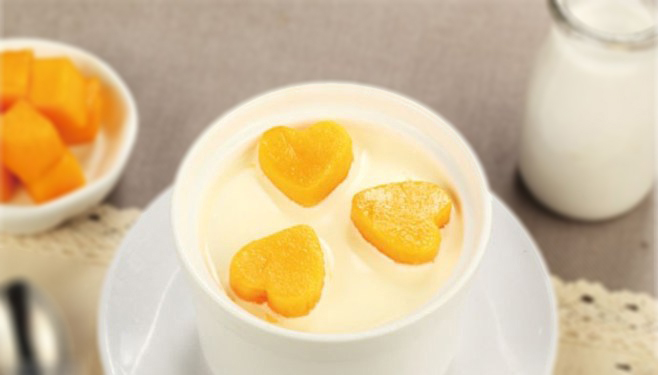
Double layered milk is a Chinese delicacy originating from Guangdong and Southern provinces. It is made by steaming milk and producing a product somewhat similar to pudding.
The Shuangpinai can be eaten with honey or sugar. Double layered milk is also very popular in Beijing and can be found in many restaurants or street vendors near the downtown area. Try Sanyuan Meiyuan (三元梅园) a local chain selling Shuangpinai, Beijing Cheese and Beijing Joghurt in different flavors.
3 Sweet Yam and Date Dessert
Tángjuǎnguǒ, 糖卷果
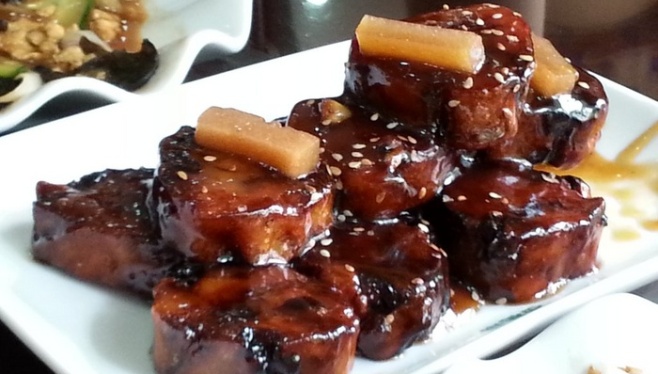
Were you waiting for sweet treats? Well, here you go: The Chinese yam and date dessert is known for its spectacular taste and health benefits. This perfect combination of yam, jujube (Chinese date), and sugar kills two birds with one stone.
It is a delicious protein and vitamin boost. Many famous Beijing restaurants like Ziguangyuan (紫光园) serve this dish. Yam and dates are rolled in flour and covered in caramelized sugar. The result is sweet, soft and absolutely heavenly.
4 Sweet Glutinous Rice Balls
àiwōwo, 艾窝窝
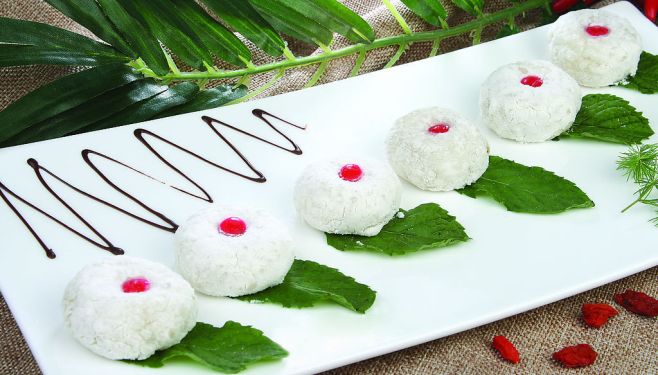
Another prestigious Beijing dessert, Aiwowo are a well known delicacy you must try before you leave. It is similar to a Baozi (包子) except it has a sweet filling. The main ingredients are hawthorn, walnut, sesame, sugar, and sticky rice.
The outer layer of sticky rice dough is covered by a layer of sugar, while the inside is stuffed with a mix of walnut, sesame, and hawthorn. Looking like a snowball this dish has a soft and sticky texture.
5 Lamb Skewers
Yángròu Chuàn, 羊肉串
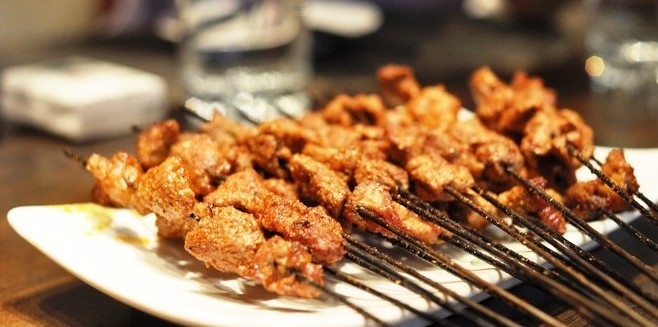
If you have a lot of friends and want to indulge on meat, lamb skewers is the way to go. On the streets of Beijing you can find numrous vendors grilling lamb skewers in the open. They are easily spottet by the large crowds aggregated around the vicinity.
The prevalence of lamb skewers in Beijing is due to its low price and great taste. Lamb skewers’ main ingredient is – drumroll please – lamb. While the lamb is barbequed, spices like paprika and cumin are sprinkled on the meat.
6 Beijing Duck
Běijīng Kǎoyā, 北京烤鸭
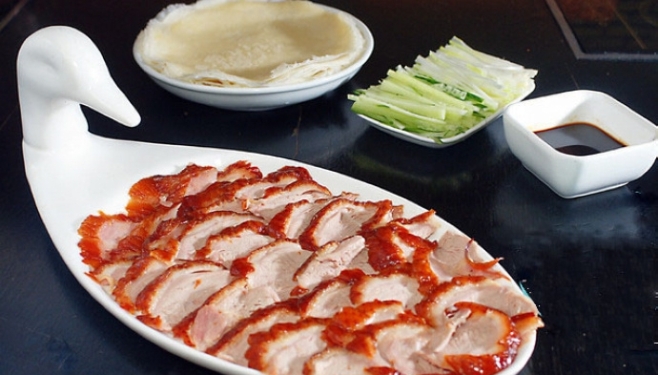
Lets continue with the most obvious one: Beijing duck. The prominent symbol of Beijing delicacies, Beijing duck is known globally for its unique flavor and crisp duck meat. The dish consists of duck meat and skin wrapped in a thin steamed pancake with spring onions, cucumber, and sweet bean sauce. The end product looks somewhat like an open ended burrito. Nonetheless, this dish has extensive history dating back to the Northern and Southern dynasties.
Beijing duck was initially enlisted as an imperial dish served for the royal family and there the dish was brought to perfection due to harsh and high diet standards. The first commercial duck restaurant, Pianyifang (便宜坊), opened in Qianmen, Beijing, in 1416. Gradually the dish received popularity after it was introduced to the public and is now a symbol of Chinese food worldwide. Pianyifang (便宜坊) and Quanjude (全聚德) are two restaurants that have the longest history and best duck in town. Other restaurants like Dadong (大董) and Xiaowangfu (小王府) are also great Beijing duck destinations.
7 Beijing Cheese
Běijīng Nǎilào, 北京奶酪
.jpg)
Beijing cheese is sort of a hybrid between cheese and yoghurt. The taste is both smooth and sweet. It melts once the cheese touches your tongue. Beijing cheese was so special back in the Yuan, Ming, and Qing dynasty that even the royal family had a hard time getting their hands on how to make this delicacy.
You can find Beijing cheese at traditional Beijing restaurants like Ziguangyuan (紫光园).
8 Gongbao Chicken
Gōngbǎo Jīdīng, 宫保鸡丁
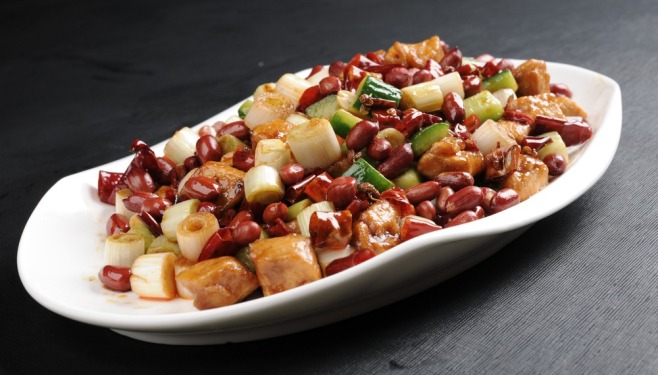
Yes, you’ve heard of this dish at your local Western Chinese restaurant and think you have had the real thing. The truth is: you have been fooled. The real Gongbao chicken made in China differs greatly from the Western version. Before 2005, Sichuan peppercorn, an important ingredient in Gongbao chicken, was banned from importation in the U.S.Thus, missing a major ingredient and with the fusion of western cuisine, many variations of Gongbao chicken originated and proliferated in Western territories.
The classic Gungbao chicken consists of stir fry chicken, vegetables, chili peppers, and peanuts, sometimes also made with special ingredients unique to a specific province. Most Beijing restaurants serve this dish since it is so popular.
9 Fried Sauce Noodles
Zhájiàngmiàn, 炸酱面
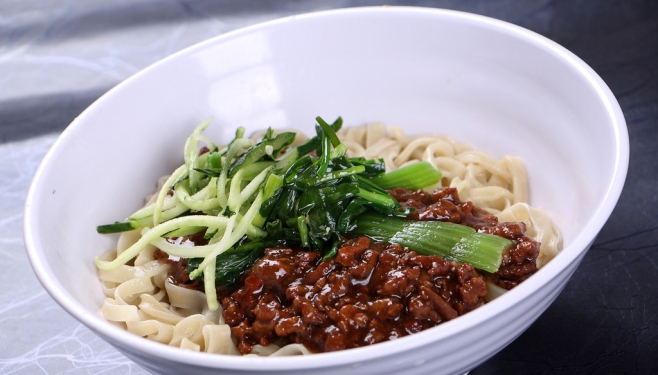
Yes, there are instant noodles brands that sell fried sauce noodles, but they taste nothing like the original fried sauce noodles that you find in Beijing city. Fried sauce noodles are a Beijing special that gradually become a sensation throughout China. Zhajiangmian were nominated one of the top ten traditional noodles in China. This is a traditional household dish made during Chinese New Year.
The dish is composed of hot meaty bean sauce poured over steaming, flat noodles. Cucumber and a boiled egg can also be added on top of the noodles. You can find fried sauce noodles at almost all the traditional noodle shops in Beijing like Malanlamian (马兰拉面).
10 Lamb Hotpot
Shuàiyángròu, 涮羊肉
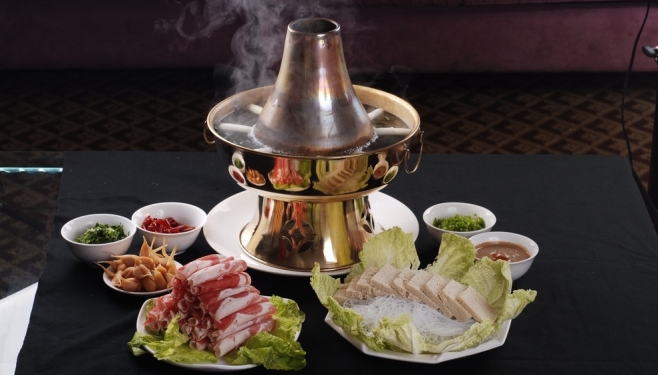
In the winter, eating lamb hotpot is the most exciting thing you could possibly do. People all around Beijing city will be wearing short sleeve shirts in steaming restaurants, eating boiled lamb , holding a beer in the other hand, enjoying the warm ambience. Lamb hotpot was invented in the Yuan dynasty and is very popular among Chinese people in Northern provinces.
Raw lamb is cut into thin slices and placed in a pool of boiling water. When the lamb meat turns brown and is ready to eat, you dip it in your favorite sauce (usually restaurants provide sesame sauce (麻酱) or fish sauce). People often order other vegetables, mushrooms, and spices not only to eat, but also to add flavor to the meat and soup. Two places, Donglaishun (东来顺) and Xiaofeiyang (小肥羊), are famous lamb hotpot destinations in Beijing among locals.
